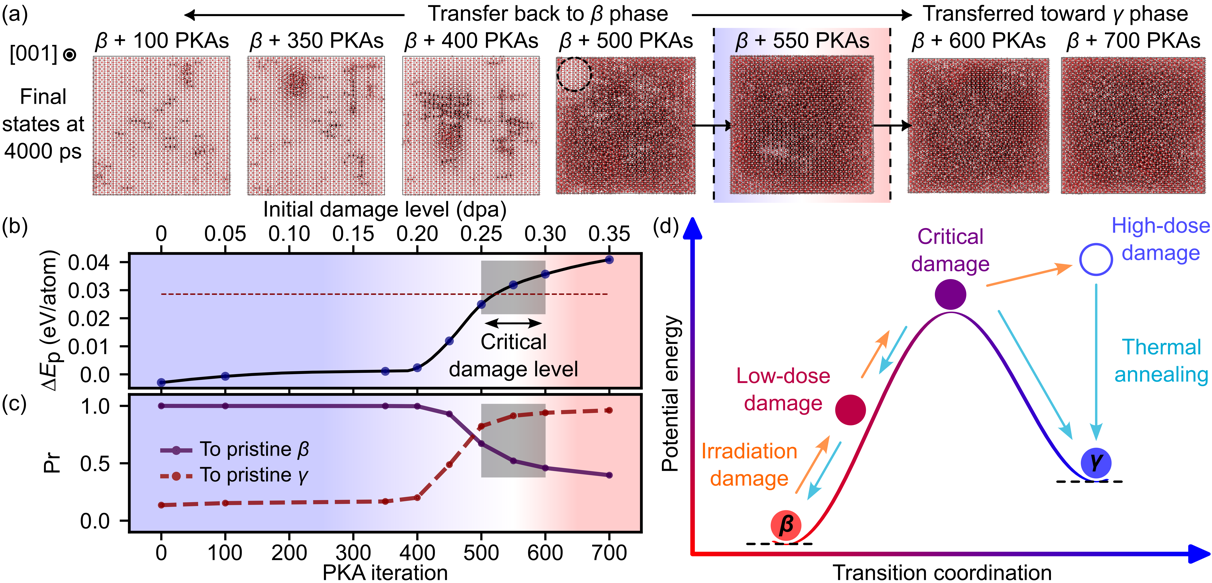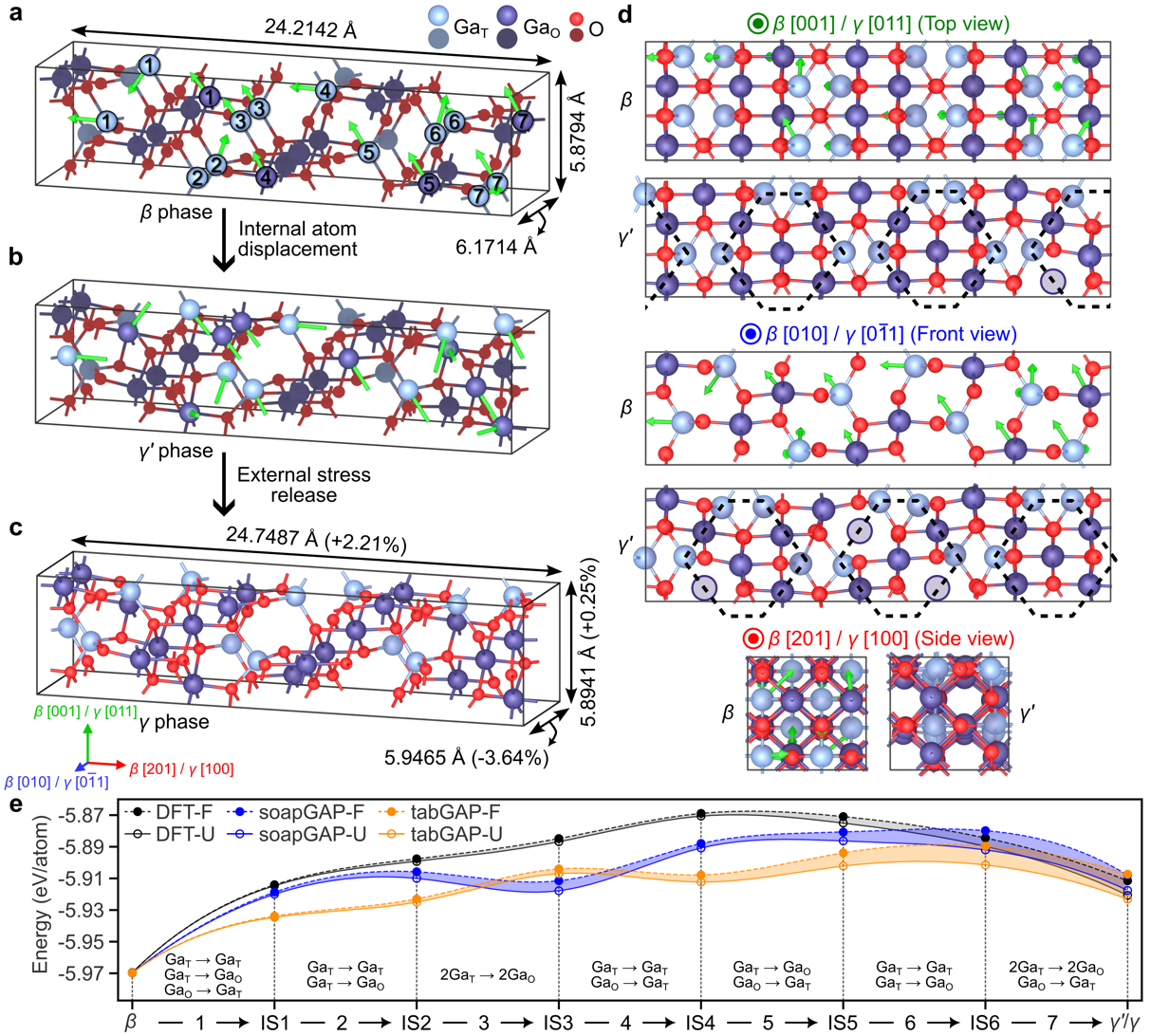Gallium oxide (Ga₂O₃) has emerged as an important material for next-generation power electronics and deep-ultraviolet detectors, but its structural stability under extreme conditions remains a significant hurdle. Understanding how high-energy irradiation affects its atomic arrangement is crucial for improving its performance in harsh environments, such as space applications and nuclear reactors. Conventional theories suggest that disorder inevitably leads to amorphization in crystalline materials, but recent findings challenge this assumption, highlighting the need for deeper exploration of disorder-induced phase transitions.

Figure 1. Under high-energy ion beam irradiation, β-phase gallium oxide undergoes a lattice phase transition from β-phase to γ-phase regulated by the disorder critical threshold.
A research team led by Associate Professor Mengyuan Hua from the Department of Electronic and Electrical Engineering at the Southern University of Science and Technology (SUSTech), in collaboration with researchers from the University of Oslo and the University of Helsinki, has revealed a novel mechanism of disorder-induced phase transition in Ga2O3 under high-energy ion beam irradiation.
Their study, titled “Crystallization Instead of Amorphization in Collision Cascades in Gallium Oxide”, has been published in the prestigious physics journal Physical Review Letters.
Conventional understanding posits that crystalline semiconductor materials subjected to high-dose particle bombardment inevitably lose their ordered atomic arrangement, forming disordered glassy states. However, this study demonstrates that when atomic damage in β-phase Ga2O3 reaches a critical threshold, the gallium sub-lattice spontaneously reorganizes into a metastable crystalline structure through specific short-range pathways.
This phenomenon challenges the long-held assumption that “disorder necessarily leads to amorphization”, highlighting the decisive role of kinetic pathways in material phase transitions. By integrating large-scale atomic-scale simulations with cutting-edge experimental validation, the research team proposed the concept of a “disorder critical threshold”. Beyond this threshold, the system preferentially reconstructs into the metastable γ-phase via shorter atomic migration paths rather than undergoing complete disordering.

Figure 2. Machine learning-driven molecular dynamics simulations: At low disorder levels, lattice damage is rapidly repaired by gallium atom migration. Conversely, when accumulated damage surpasses the original β-phase structure, the system reaches the disorder critical threshold, driving the gallium sub-lattice toward metastable γ-phase reconstruction.
The researchers employed state-of-the-art atomic-resolution scanning transmission electron microscopy and machine learning-enhanced molecular dynamics simulations to precisely determine the disorder critical threshold triggering the β-to-γ phase transition. They also mapped the complete shortest atomic migration pathways within periodic lattice systems, characterized by short-range gallium displacement and concomitant stress release.

Figure 3. Mechanistic illustration of the shortest atomic migration path from β- to γ-phase: This pathway significantly reduces migration distances for gallium atoms to reach stable lattice sites after irradiation damage.
This breakthrough provides transformative insights for designing semiconductor materials and devices under extreme conditions. As a core material for next-generation high-performance power semiconductors and deep-ultraviolet detectors, precise structural control of Ga2O3 is critical for device performance. By regulating the disorder level, researchers can synthesize metastable polymorphic materials previously unattainable through conventional methods, paving the way for enhanced efficiency and stability in electronic devices.
The proposed kinetic pathway selection mechanism holds promise for applications in radiation-resistant materials, such as nuclear reactor components and aerospace coatings, establishing a theoretical foundation for extreme-environment material development.
Research Associate Professor Junlei Zhao from the Department of Electronic and Electrical Engineering at SUSTech is the first author of the study. Associate Professor Mengyuan Hua and Professor Andrej Kuznetsov from the University of Oslo are the corresponding authors. SUSTech is the primary affiliated institution.
Paper link: https://doi.org/10.1103/PhysRevLett.134.126101
To read all stories about SUSTech science, subscribe to the monthly SUSTech Newsletter.
Proofread ByYuwen ZENG
Photo ByDepartment of Electronic and Electrical Engineering